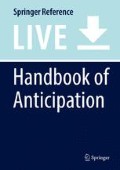Abstract
My concept of the “near future” originates in a paper published in 2007, in the context of what US Federal Reserve Chairman Alan Greenspan called The Age of Turbulence (2007) in the economy. The coincidence of this economic concern, alongside a rising religious focus on “the end times”, and secular concerns with the new millennium, global warming and political turbulence, became complex and contested themes for conceptualization. A calculable “near future” may be disappearing, as referring to a manageable range of rational planning of the postwar, 5-year-plan kind, with its confident expectation of making life better within a definite time frame, and by following a defined path. Instead, a “punctuated time” of multiple dates and commitments is being crafted and managed together by both individual people and collectivities, drawing more often on invocations of “apocalypse” as looming disaster, and “emergence” as an indeterminate process. Anthropological analysis has also inserted new questions about ontology: how do we conceptualize ourselves in these differently defined transitional modes? My paper endorses and explores how “anticipation” can help to focus empirical exploration of the complexity of temporal concepts and processes, in the public sphere.
References
Amato, M., & Fantacci, L. (2014). Saving the market from capitalism. Cambridge: Polity Press.
Appadurai, A. (2013). The future as cultural fact. Essays on the global condition. London: Verso.
Appadurai, A. (2016). Moodswings in the anthropology of the emerging future. HAU Journal of Ethnographic Theory, 6(2), 1–4.
Baca, G., Khan, A., & Palmié, S. (2009). Empirical futures. anthropologists and historians engage the work of Sidney W. Mintz. Chapel Hill: University of North Carolina Press.
Boyer, D., & Marcus, G. E. (2015). Introduction. New methodologies for a transformed discipline. In D. Boyer, J. Faubion, & G. E. Marcus (Eds.), Theory can be more than it used to be. Learning anthropology’s method in a time of transition (pp. 1–11). Ithaca: Cornell University Press.
Bright, J., & Hruby, A. (2015). The next Africa. An emerging continent becomes a global powerhouse. New York: Thomas Dunne Books.
Faubion, J. (Ed.). (2016). On the anthropology of the contemporary. Addressing concepts, designs, and practices. Hau: Journal of Ethnographic Theory, 6(1), 371–402.
Goldstone, B., & Obarrio, J. (2016). African futures. Essays on crisis, emergence, and possibility. Chicago: University of Chicago Press.
Greenspan, A. (2007). The age of turbulence. Adventures in a new world. New York: Penguin Books.
Guyer, J. I. (2007). Prophecy and the near future: Thoughts on macroeconomic, evangelical and punctuated time. American Ethnologist, 34(3), 409–421.
Guyer, J. I. (2012). Terms of debate versus words in circulation: Some rhetorics of the crisis. In J. Carrier (Ed.), Handbook of economic anthropology (pp. 612–625). Cheltenham: Edward Elgar publishing.
Guyer, J. I. (2015). Introduction to the question: Is confusion a form? Social Dynamics, 41(1), 17–33.
Guyer, J. I. (2016). “On the verge”: From the possible to the emergent. HAU Journal, see above, ed Faubion, 6(1), 373–377.
Harari, Y. N. (2015). Homo Deus. A brief history of tomorrow. London: Harvill Secker.
Kohn, E. (2013). How forests think. Toward an anthropology beyond the human. Berkeley: University of California Press.
Maurer, B. (2002). Repressed futures: Financial derivatives’ theological unconscious. Economy and Society, 31(1), 15–36.
Mbembe, A. (2016). Africa in Theory. In African Futures. Essays on Crisis, Emergence, and Possibility. Brian Goldstone and Juan Obarrio (eds.) University of Chicago Press, 211–230
Miyazaki, H. (2004). The method of hope. Anthropology, philosophy and Fijian knowledge. Stanford: Stanford University Press.
Miyazaki, H., & Swedberg, R. (Eds.). (2016). The economy of hope. Philadelphia: University of Pennsylvania Press.
Ohnuki-Tierney, E. (1990). Culture through time. Anthropological approaches. Stanford: Stanford University Press.
Okri, B. (1996). Birds of heaven. London: Phoenix, division of Orion Books.
Paulson, H. (2010). On the brink. Inside the race to stop the collapse of the global financial system. New York: Business Plus.
Pfeiffer, J. (1969). The emergence of man. New York: Harper and Row.
Pfeiffer, J. (1985). The emergence of humankind. New York: Harper and Row.
Piot, C. (1999). Remotely global. Village modernity in West Africa. Chicago: University of Chicago Press.
Poli, R. (2017). Social Time as a Multidimensional Category. World Future Review, 9, 1–7.
Robbins, J. (2004). Becoming sinners. Christianity and moral torment in a Papua New Guinea society. Berkeley: University of California Press.
Roitman, J. (2014). Anti-crisis. Durham: Duke University Press.
Salami, K. K., & Guyer, J. I. (2015). Confusion and personification in Yoruba thought and practice. Social Dynamics, 41(1), 1–16.
Trouillot, M.-R. (1995). Silencing the past. Power and the production of history. Boston: Beacon Press.
Turner, V. (1967). Muchona the hornet, Chapter 6. In The forest of symbols. Aspects of Ndembu ritual. Ithaca: Cornell University Press.
Verdery, K. (1996). What was socialism and what comes next? Princeton: Princeton University Press.
Author information
Authors and Affiliations
Corresponding author
Editor information
Editors and Affiliations
Rights and permissions
Copyright information
© 2017 Springer International Publishing AG
About this entry
Cite this entry
Guyer, J.I. (2017). Anthropology and the Near-Future Concept. In: Poli, R. (eds) Handbook of Anticipation. Springer, Cham. https://doi.org/10.1007/978-3-319-31737-3_69-1
Download citation
DOI: https://doi.org/10.1007/978-3-319-31737-3_69-1
Received:
Accepted:
Published:
Publisher Name: Springer, Cham
Print ISBN: 978-3-319-31737-3
Online ISBN: 978-3-319-31737-3
eBook Packages: Springer Reference Religion and PhilosophyReference Module Humanities and Social SciencesReference Module Humanities

